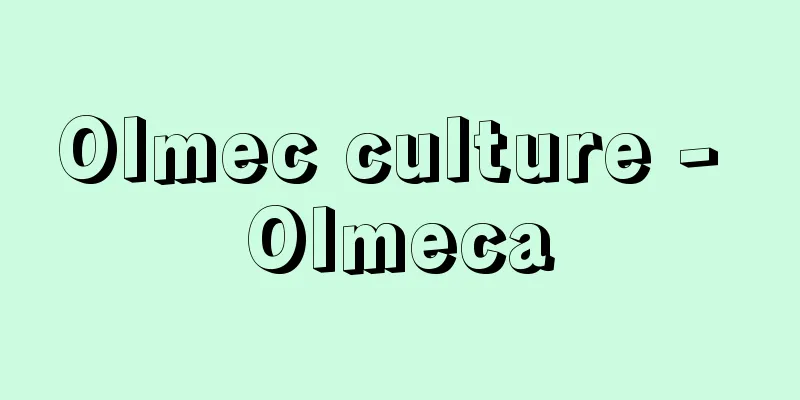Olmec culture - Olmeca

|
Along with the Chavin culture of the central Andes (Peru), this is the oldest culture in the Americas. It is also called the mother of Mesoamerican civilization. It is said to have arisen based on intensive agriculture established in Mesoamerica in the 2nd millennium BC, and it influenced a wide area from central Mexico to southern Central America, centering on large ritual centers that spiritually unified local communities. Representative ruins are concentrated in the subtropical lowlands of Mesoamerica, namely the Mexican states of Veracruz and Tabasco, and La Venta, San Lorenzo, and Tres Zapotes are famous. San Lorenzo is the oldest, and is said to have flourished between 1200 and 900 BC, and La Venta is thought to have arisen around 800 BC. Large stone sculptures, especially giant heads with headdresses about 3 meters high, monuments representing statues of gods, earthen altars, pyramids, etc., were created in these sacred areas, and stone products and stone drains that were offered underground have also been discovered. Moreover, the raw stone was not mined in the vicinity, so it is highly likely that it was transported from a distant location. Therefore, it is believed that many people were mobilized to build the Olmec ceremonial centers, and it is presumed that a political system that controlled a wide area of the population was already in place at that time. In addition, small stone figurines and sacred axes were produced in large quantities using jade, which was mined in Guerrero, Mexico, and the Motagua River region of Guatemala, and are distributed throughout Mesoamerica, which suggests that a pilgrimage and trade network was established around the Olmec ceremonial centers. [Yoshiro Masuda] Artistic characteristics and cultural influencesThe Olmec art style is characterized by the use of simple yet powerful lines to depict figures and deities. The "baby face" or "half-jaguar" deity, whose face and body are a fusion of a jaguar and a human, and the representation of snakes are said to be related to the Olmec belief in water gods, and some scholars say that the baby face was a composite of the face of Chac, the rain god, one of the main deities of the later Mexican civilization. There are many elements in common with later Maya culture, such as stone carvings, monuments, and altars, but the style is quite different, and unlike Maya stone carvings, which cover the surface of the stone with decoration, there is a strong tendency to leave spaces in the carvings. The Olmec culture lost momentum by around 200 BCE, and the various ceremonial centers in the central Mexican highlands and Monte Alban in Oaxaca emerged under its influence. The influence of the Olmecs is also evident in the Izapa culture, which arose on the Pacific coast of southern Mexico and spread to the Guatemalan highlands. At that time, a ceremonial center called Cerro de las Mesas continued to exist in the Gulf of Mexico region, and continued to exist until later times. The influence of the Izapa culture was significant at this site, but a large number of jade sacred axes have also been discovered, indicating that the influence of the Olmec culture was still strong. At Cerro de las Mesas, a calendar notation using dots and lines based on the same principle as the later Maya calendar was discovered, which corresponds to 31 BCE in the Gregorian calendar, making it the oldest dating notation in Mesoamerica. It is interpreted that the Olmec culture was absorbed into the Izapa culture, which eventually led to the formation of the Classic Maya culture. [Yoshiro Masuda] [References] |Source: Shogakukan Encyclopedia Nipponica About Encyclopedia Nipponica Information | Legend |
|
中央アンデス(ペルー)のチャビン文化とともに、アメリカ大陸最古の文化。メソアメリカ文明の母ともいわれる。紀元前二千年紀にメソアメリカに成立した集約農耕に基づいて発生したといわれ、地域社会を精神的に統合する大祭祀(さいし)センターを中心として、メキシコ中央部から中央アメリカ南部に至る地域に広く影響を与えた。代表的な遺跡は、メソアメリカの亜熱帯低地、すなわちメキシコのベラクルス、タバスコ両州に集中し、ラ・ベンタ、サン・ロレンソ、トレス・サポテスなどが有名である。年代はサン・ロレンソがもっとも古く、前1200~前900年に栄えたとされ、その後、前800年ごろからラ・ベンタが興ったと考えられている。それらの神域には大きな石彫、とくに高さ3メートルほどの頭飾りをつけた巨人頭像や、神々の像を表す碑石や、土を盛った祭壇、ピラミッドなどがつくられ、地中から奉納された石製品や石の排水溝なども発見されている。しかもそれらの原料石は近隣で産出せず、遠隔地から運ばれた可能性が強い。したがって、オルメカの祭祀センター建設のためには多くの人間が動員されたと考えられ、当時すでに広域の人口を支配する政治システムが成立していたことが推定される。また、メキシコのゲレーロ州、グアテマラのモタグア川地方などに産する翡翠(ひすい)を材料に小型の石偶や聖斧(せいふ)などが多量に生産され、メソアメリカ各地に分布している点からも、オルメカの祭祀センターを中心とした、巡礼や交易のネットワークが成立していたことが想像される。 [増田義郎] 芸術的特徴と文化的影響オルメカの芸術スタイルの特徴は、単純な、だが雄渾(ゆうこん)な線によって人物や神像を描き出す点にある。「ベビー・フェース」または「半ジャガー人」とよばれる、ジャガーと人間の融合した顔と体をもつ神像や、蛇の表象などは、オルメカ人の水神信仰と関係があるといわれ、ベビー・フェースから、後のメキシコ文明の主神の一つ、雨の神チャックの顔が合成されたと説く学者もいる。 石彫、碑石、祭壇など、後のマヤ文化と共通の要素が少なくないが、スタイルのうえではかなり相違しており、石の表面を装飾でうずめ尽くすマヤの石彫とちがって、彫刻に空白を残す傾向が強い。オルメカ文化は前200年ごろまでに勢いを失い、その影響を受けたメキシコ中央高原の諸祭祀センターや、オアハカのモンテ・アルバンなどが台頭する。またメキシコ南部太平洋岸に興りグアテマラ高原まで広がったイサパ文化にもオルメカの影響は現れている。そのころメキシコ湾岸地方には、セロ・デ・ラス・メサスという祭祀センターが命脈を保っており、その後の時代まで続くが、この遺跡にはイサパ文化の影響が著しいと同時に、翡翠の聖斧が大量に発見されており、オルメカ文化の影響が依然として強かったことを示している。このセロ・デ・ラス・メサスからは、後のマヤ暦と同じ原理による、点と線を用いた暦表記が発見されていて、西暦に換算すると前31年にあたり、メソアメリカにおける最古の年代表記である。オルメカ文化はイサパ文化に吸収され、やがて古典期マヤ文化の形成につながっていったと解釈されている。 [増田義郎] [参照項目] |出典 小学館 日本大百科全書(ニッポニカ)日本大百科全書(ニッポニカ)について 情報 | 凡例 |
Recommend
Lot quality
...(1) As a quality control term, it is a collect...
Apeltes
...The stickleback and the three-spined stickleba...
Kansas [State] - Kansas
A central state in the United States. Abbreviated ...
Shostakovich
Russian (Soviet) composer and pianist. Born to a P...
Seigen Gyōshi - Seigen Gyōshi
A Zen monk from the Tang Dynasty in China. He was...
Argentoratum - Argentoratum
…In addition to the museum that houses Italian, F...
Dominion of Canada - Canada Jichiryo (English spelling)
The official name of Canada from 1867 to 1951. Bas...
Reshteh-ye Alborz (English spelling)
…The mountain range that runs east to west along ...
Roar - roar (English spelling) beat
The phenomenon in which the amplitude of the compo...
Papus (English spelling)
1865‐1916 French physician and occult researcher. ...
Isobutyric acid
An aliphatic carboxylic acid, an isomer of butyri...
arms exports
It refers to the sale of weapons to foreign countr...
Officer candidate - Kanbu Kohosei
〘noun〙① In the former army, a person who had gradu...
Kanebo Acrylic
…In Japan, seven companies produce acrylic fibers...
Shamm al-nasīm (English spelling) Shammalnasim
…In Iran, in addition to the Gregorian and Hijri ...









